Abstract
1. Single unit activity in the inferior colliculus of bats was studied in relation to the analysis of frequency-modulated (FM) and complex sounds. Complex sounds were composed of tone pulse I (pure or FM tone) delivered simultaneously with tone pulse II (pure or sometimes FM tone). It was assumed that in relevant complex sounds produced by animals, an important component (e.g. a formant in human speech) occurred at the best frequency (BF) of a given neurone. Tone pulse I represented such a component (called BF component). Tone pulse II was assumed to correspond to higher or lower components according to its relation to BF. Depending on characteristics of responses to tonal stimuli, collicular neurones were classified into five types: symmetrical, asymmetrical, FM-insensitive, FM-sensitive (or FM-specialized) and upper-threshold units.
2. The symmetrical unit had a wide excitatory area and no inhibitory areas and it responded with equal thresholds to FM tone pulses sweeping in either directions. This type of neurone responded to all frequency modulations (e.g. transition in human speech) of the BF component, and the response was scarcely inhibited by other components.
3. In the asymmetrical unit, the extent of frequency modulation of the BF component which could excite the neurone was limited by inhibitory areas on one or both sides of an excitatory area. Inhibitory areas on the lower frequency side tended to be larger than those on the high frequency side. The limitation was more severe for frequency sweeps toward the best frequency than for sweeps starting from it. The response to the BF component was inhibited by lower and/or higher components unless these were outside the inhibitory areas. In most of the asymmetrical units, lower components were more important than higher ones in determining whether the response to the BF component could occur.
4. In the FM-insensitive unit with a narrow excitatory area, inhibitory areas on both sides of the excitatory area restricted the extent of frequency modulation of the BF components which could activate the neurone. Responses to frequency sweeps toward the best frequency were strongly limited by the inhibitory areas. When the lower and/or higher components were within the inhibitory areas, the response to the BF component was inhibited. This type of neurone responded to more restricted combinations of components than did the asymmetrical units.
5. The FM-sensitive unit which had no excitatory area but a large inhibitory area responded only to FM components in a certain range. Evidence was obtained that not only the range and direction but rate and functional form of frequency sweep were important in determining the excitation of the neurone. Noise bursts with various band widths did not activate the neurones. Responses of the neurones were commonly inhibited by tones within an inhibitory area so wide as to involve even frequencies in the FM component which excited the neurone. Thus, the response of the FM-sensitive unit depended not only upon the characteristics of the FM component, but also on the frequencies of other components.
6. The asymmetrical, FM-insensitive and FM-sensitive units required for their activation a certain structure in the complex sound. Some of the upper-threshold units did not respond to a sufficiently strong BF component and/or its frequency modulation. Furthermore, the response of the neurone to a weak BF component was inhibited by strong lower and/or higher components in a certain range. Some upper-threshold units also had asymmetrical or FM-sensitive characteristics. Those neurones appeared to be specialized for the analysis of sound structure not only in frequency, but in intensity.
7. Although various types of behaviour of single neurones were found in the inferior colliculus, a strong tendency in the neural analysis of complex sound was the restriction of conditions under which single neurones were activated. Neurones at higher levels responded to more restricted sequences or sets of sound stimuli than did those at lower levels.
Full text
PDF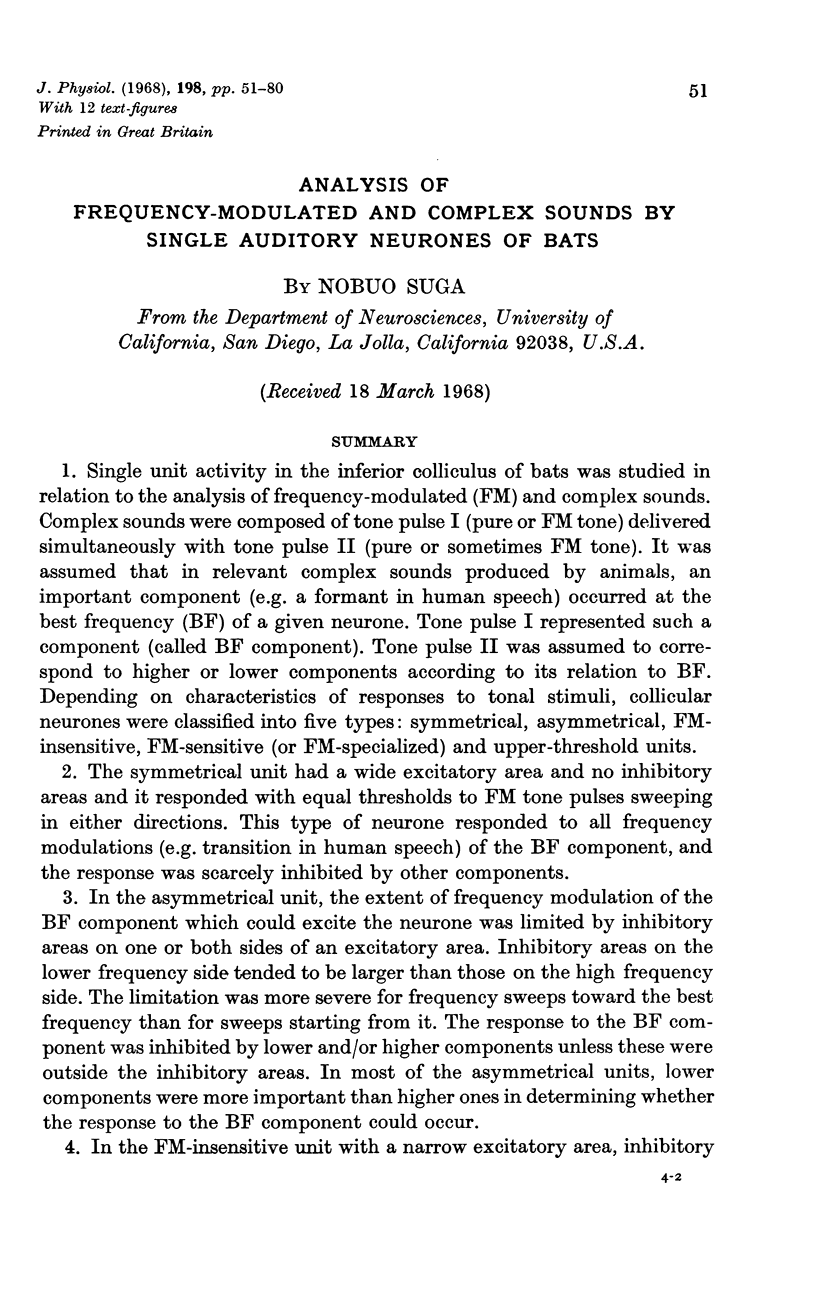
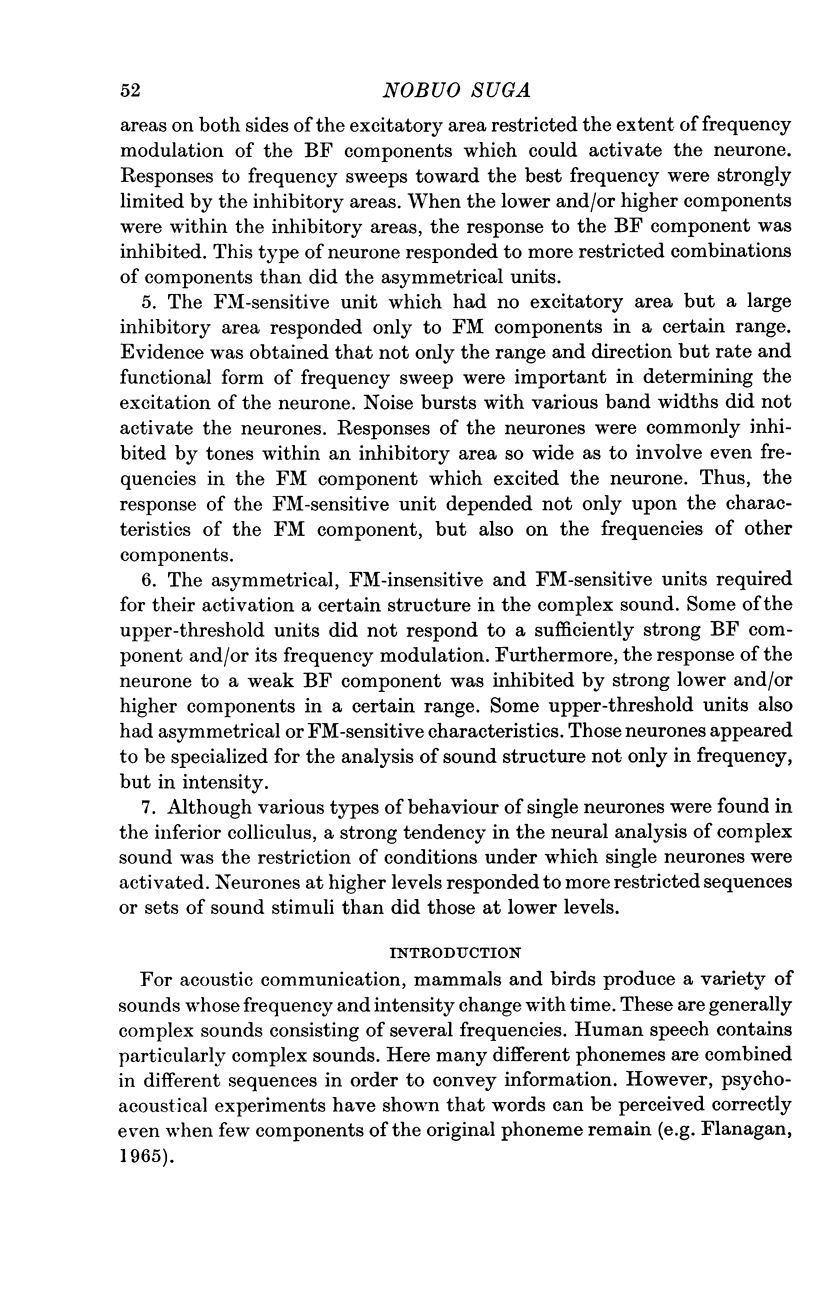
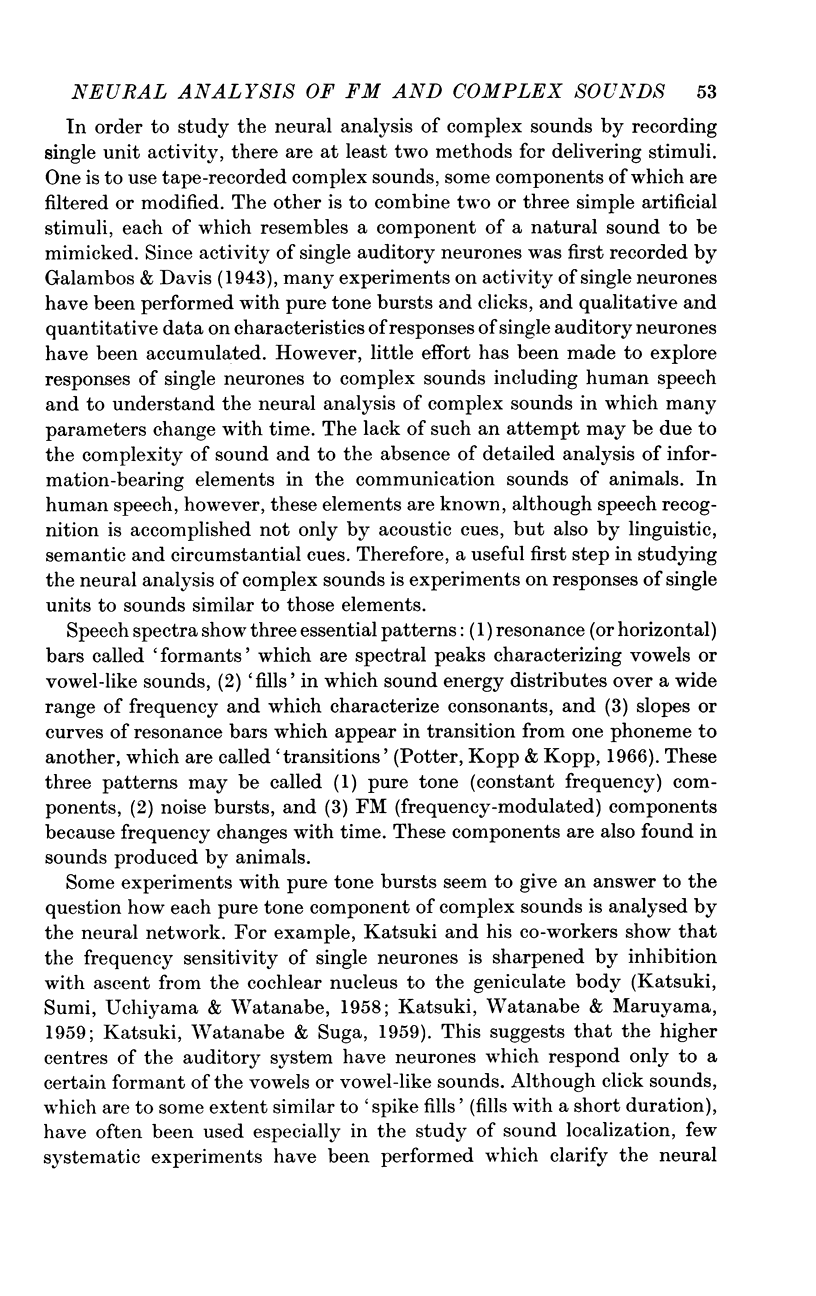
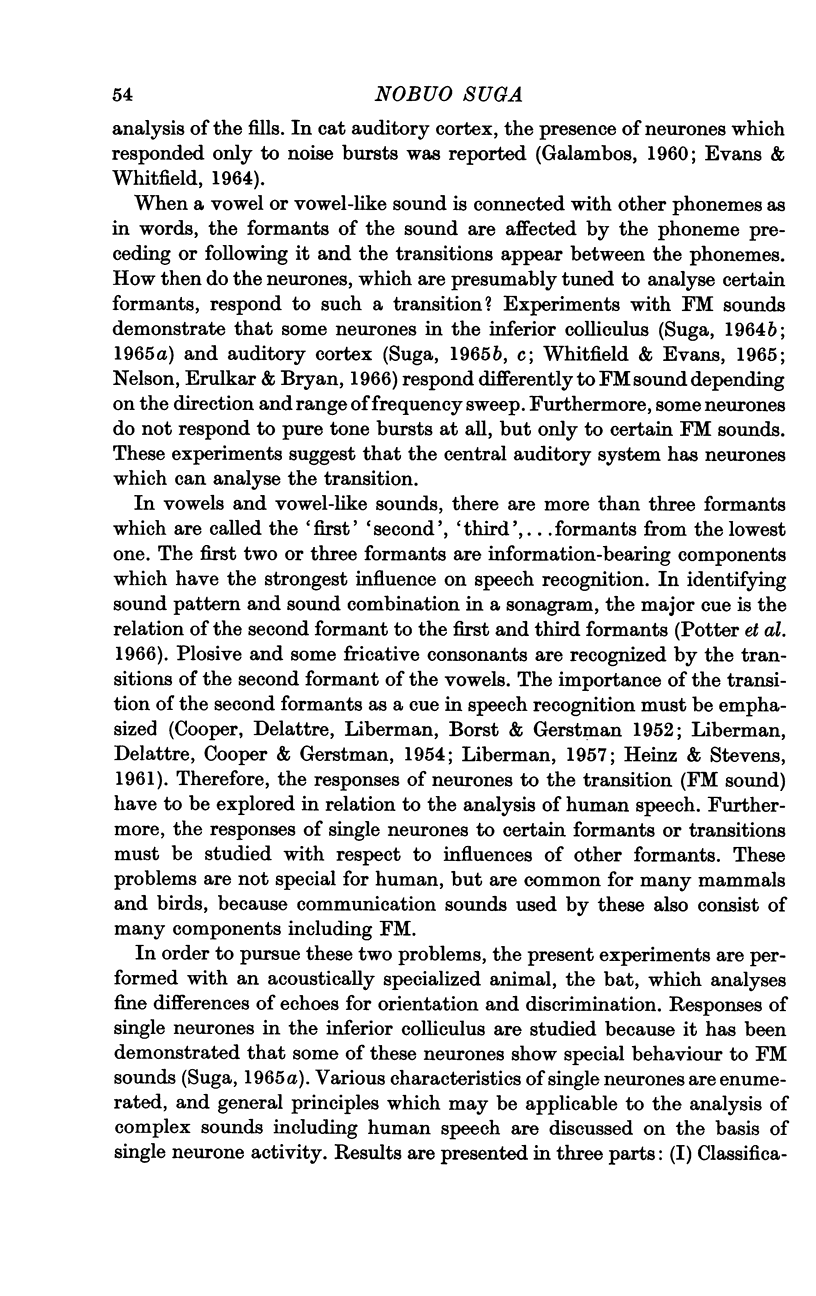
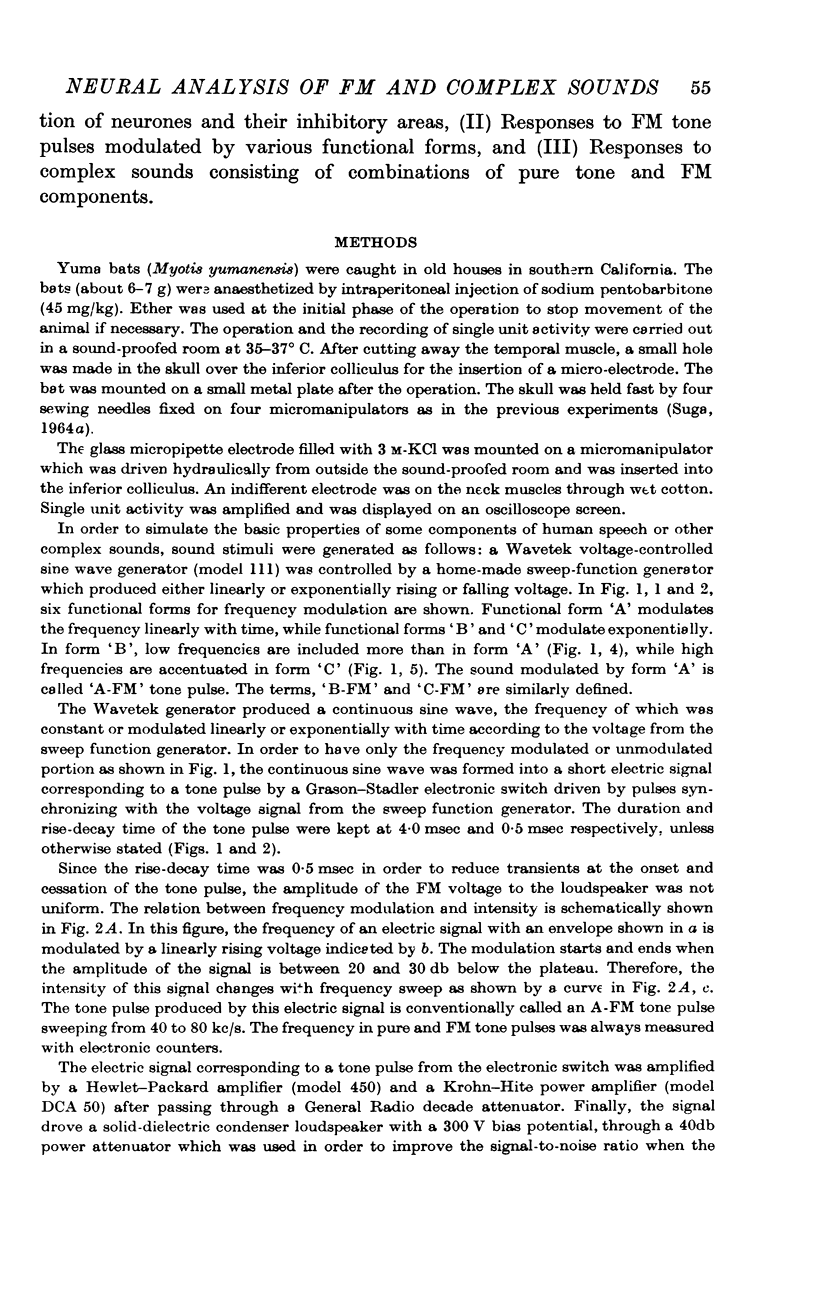
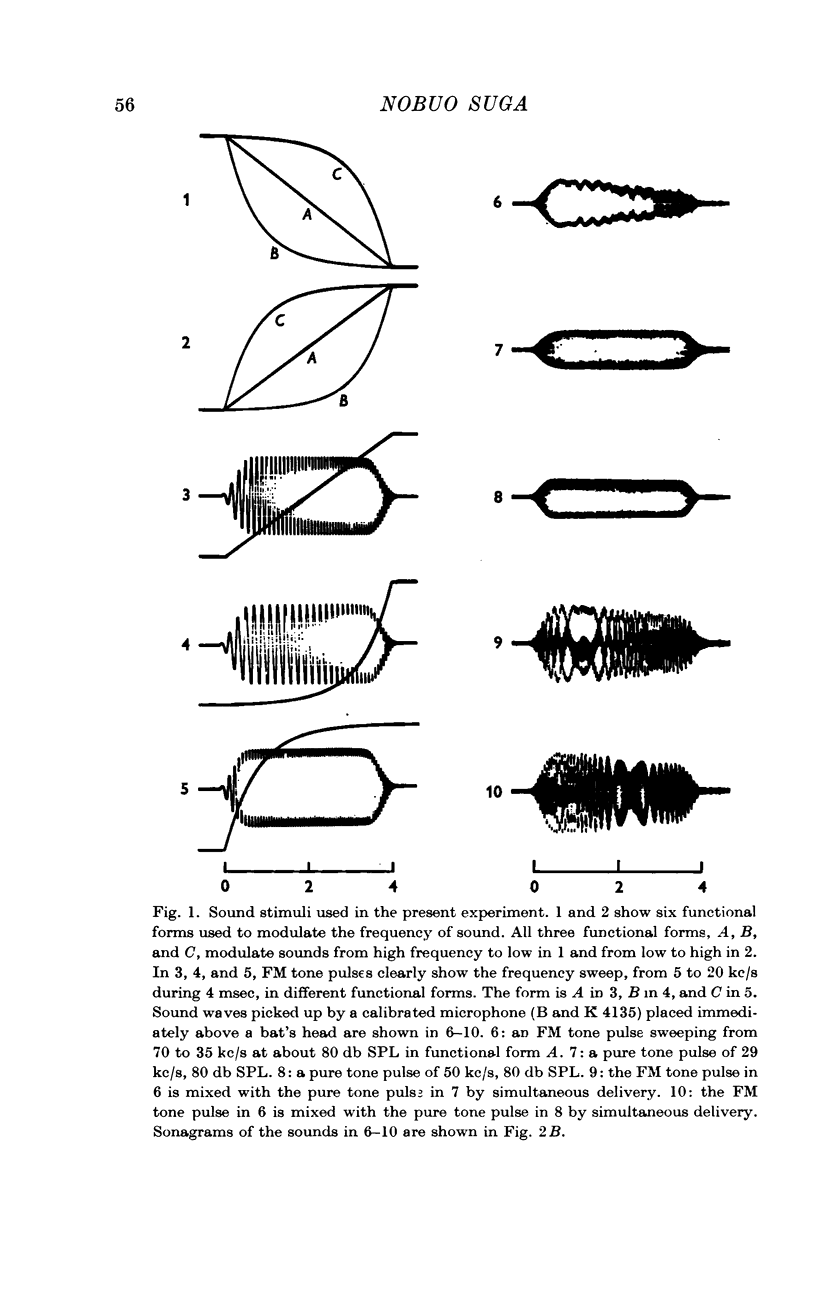
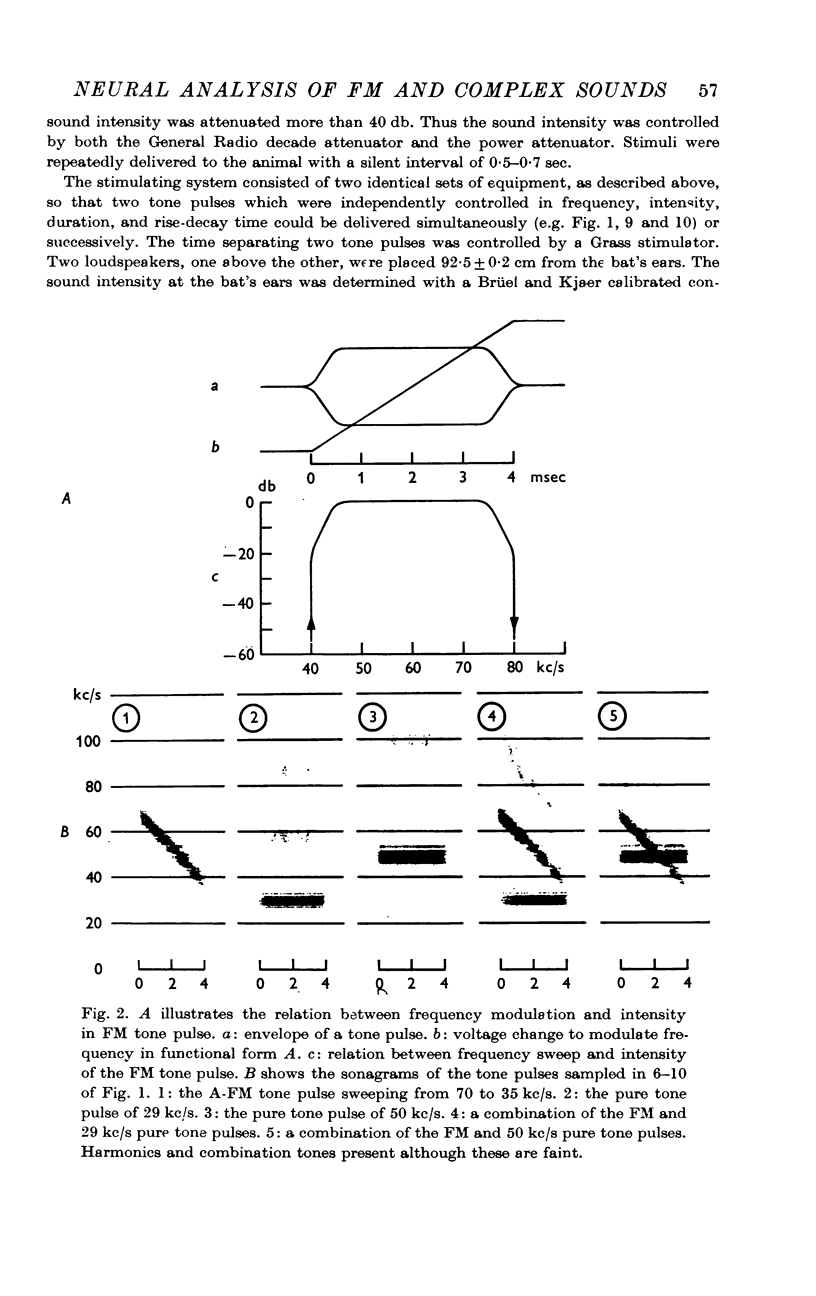
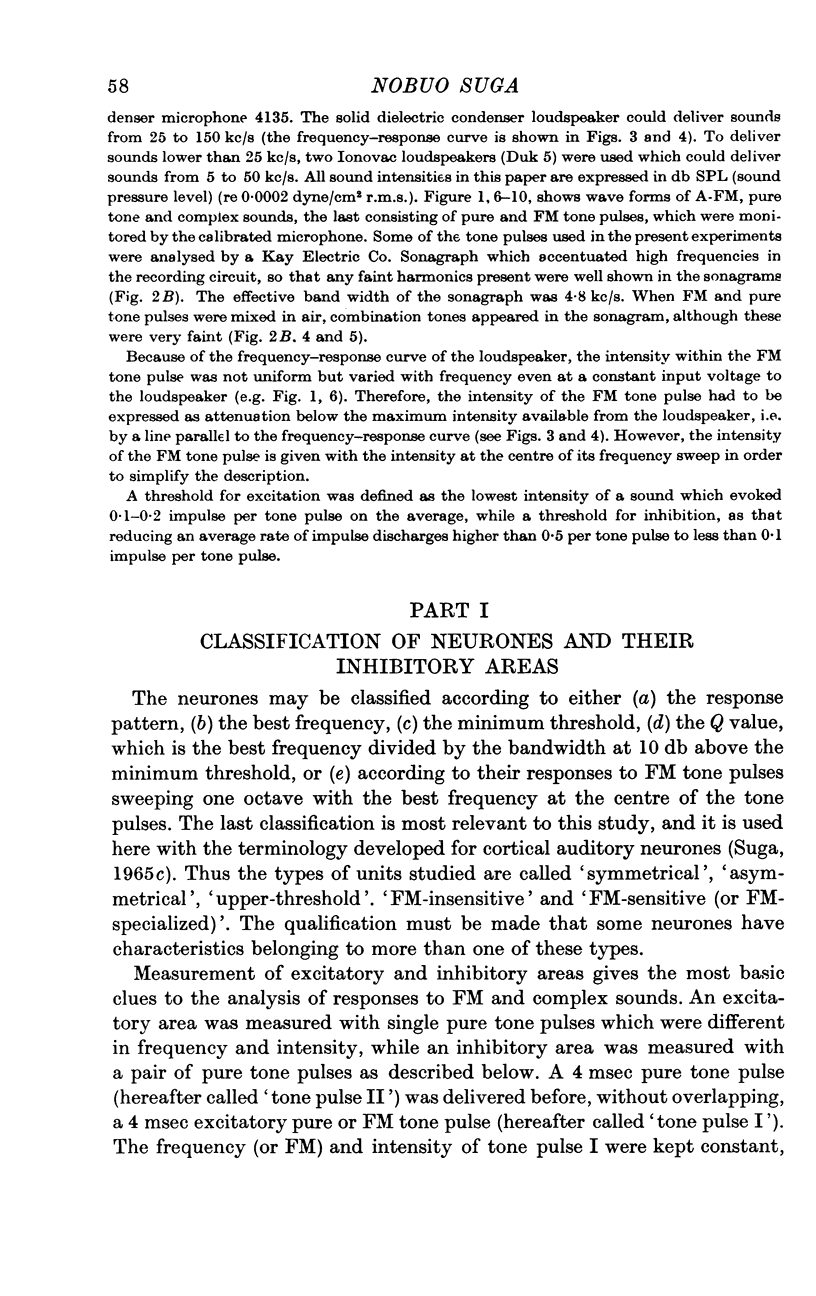
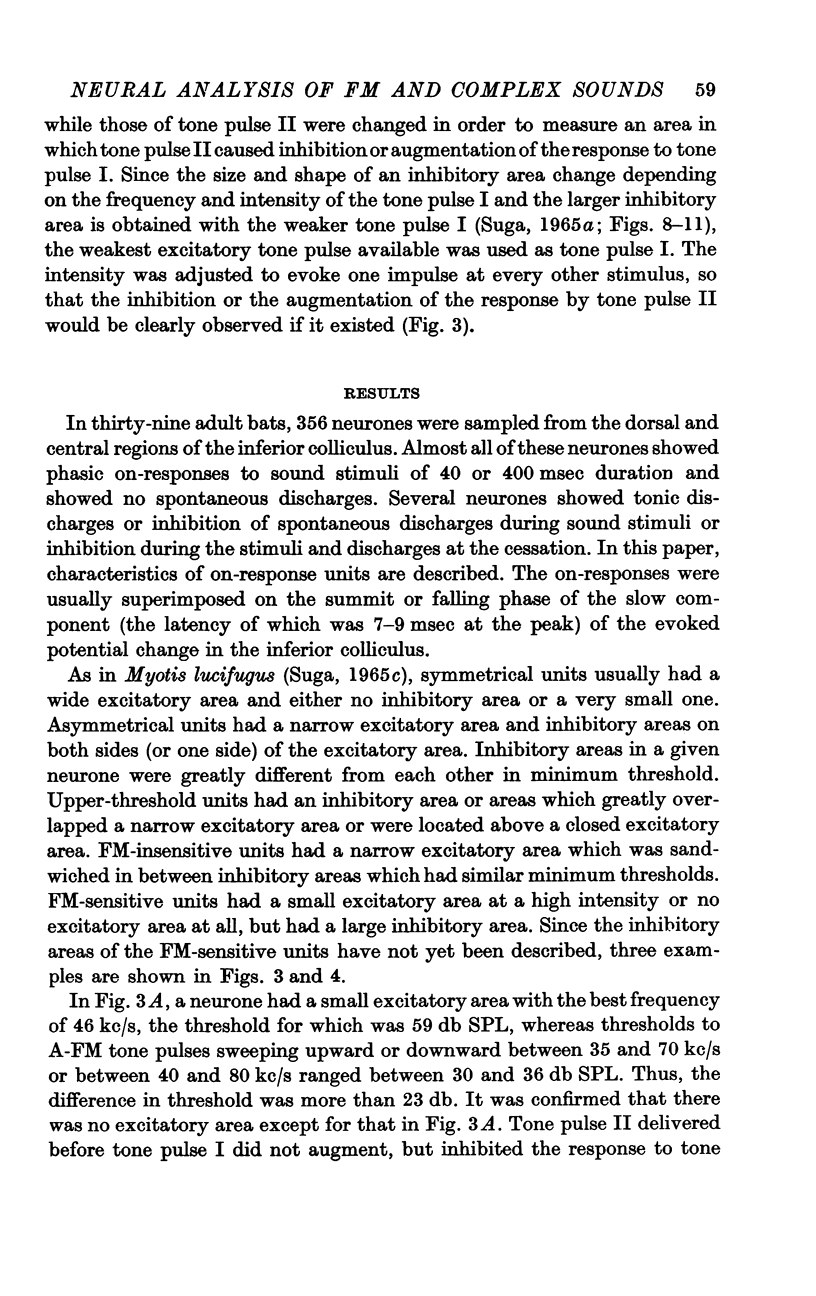
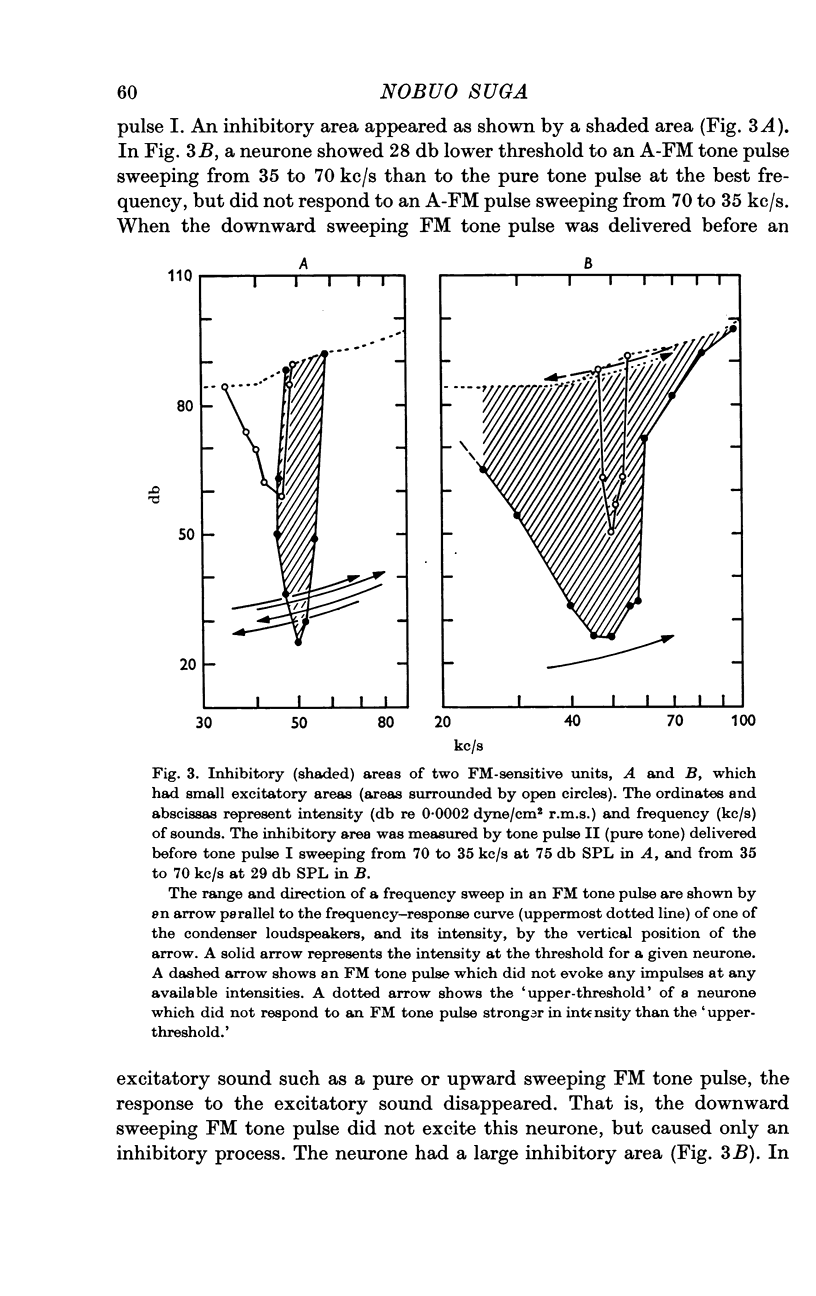
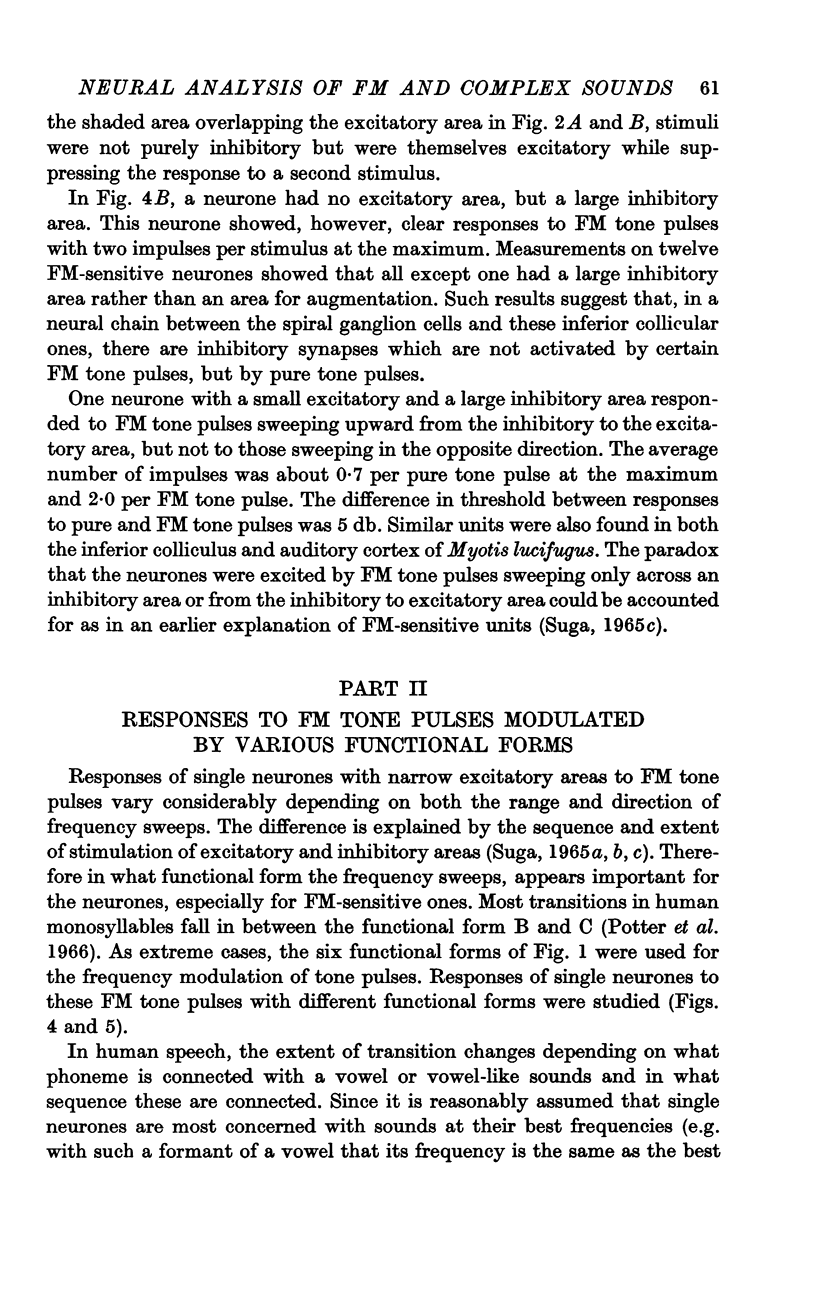
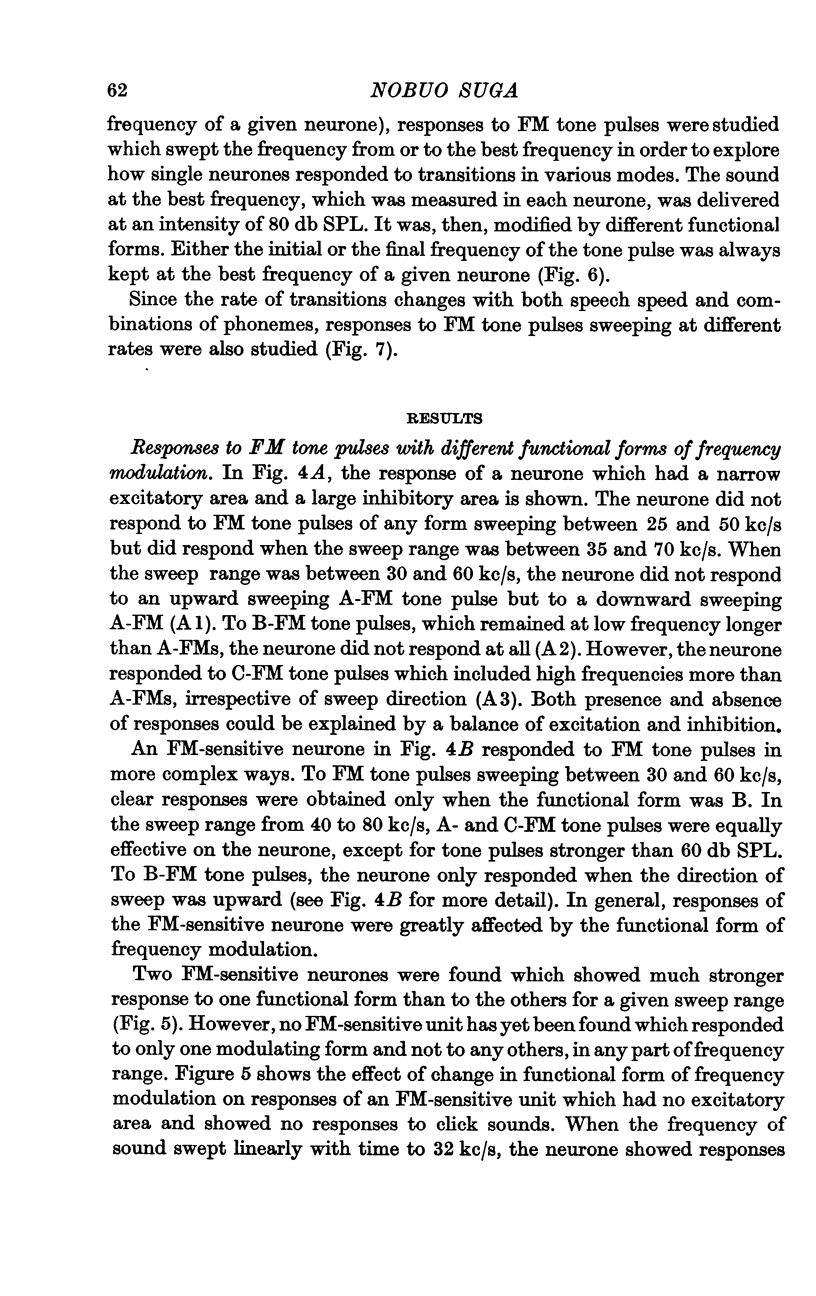
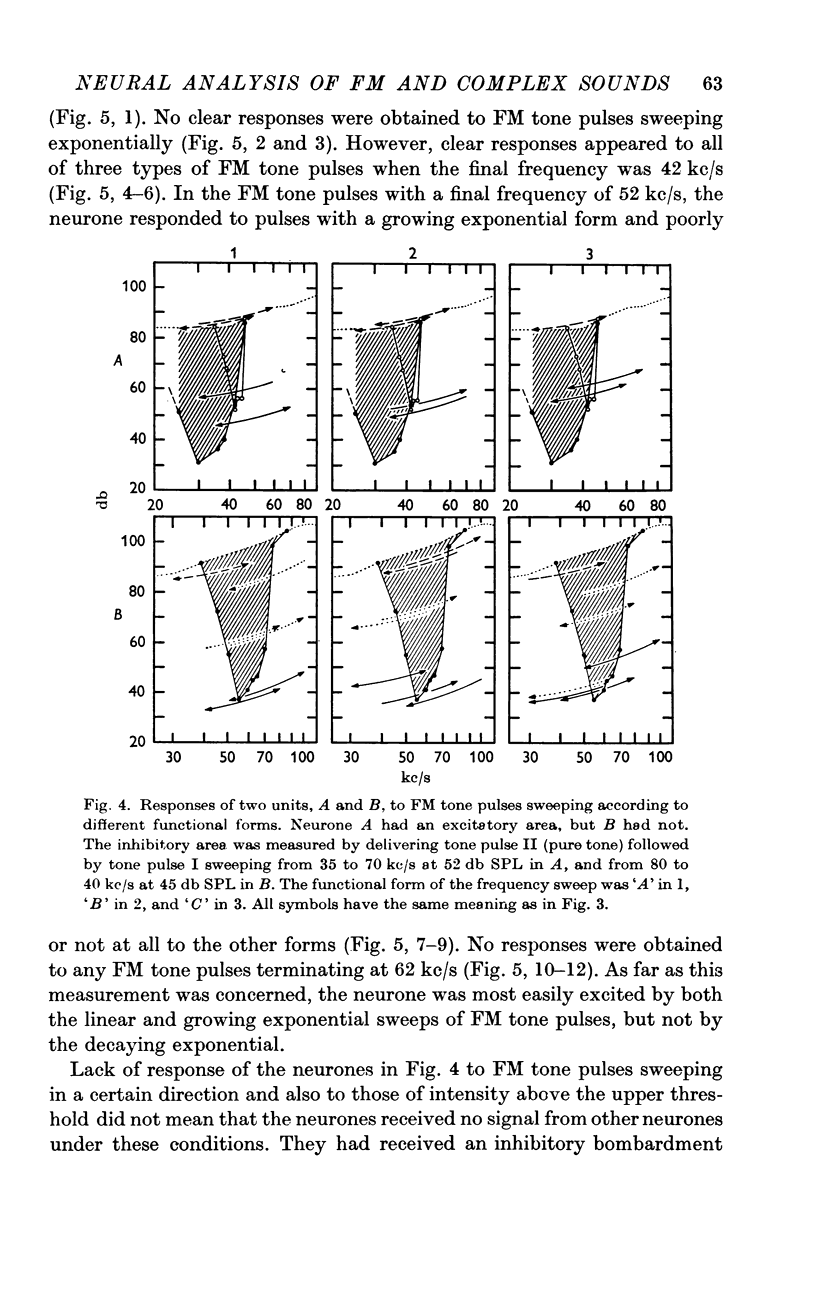
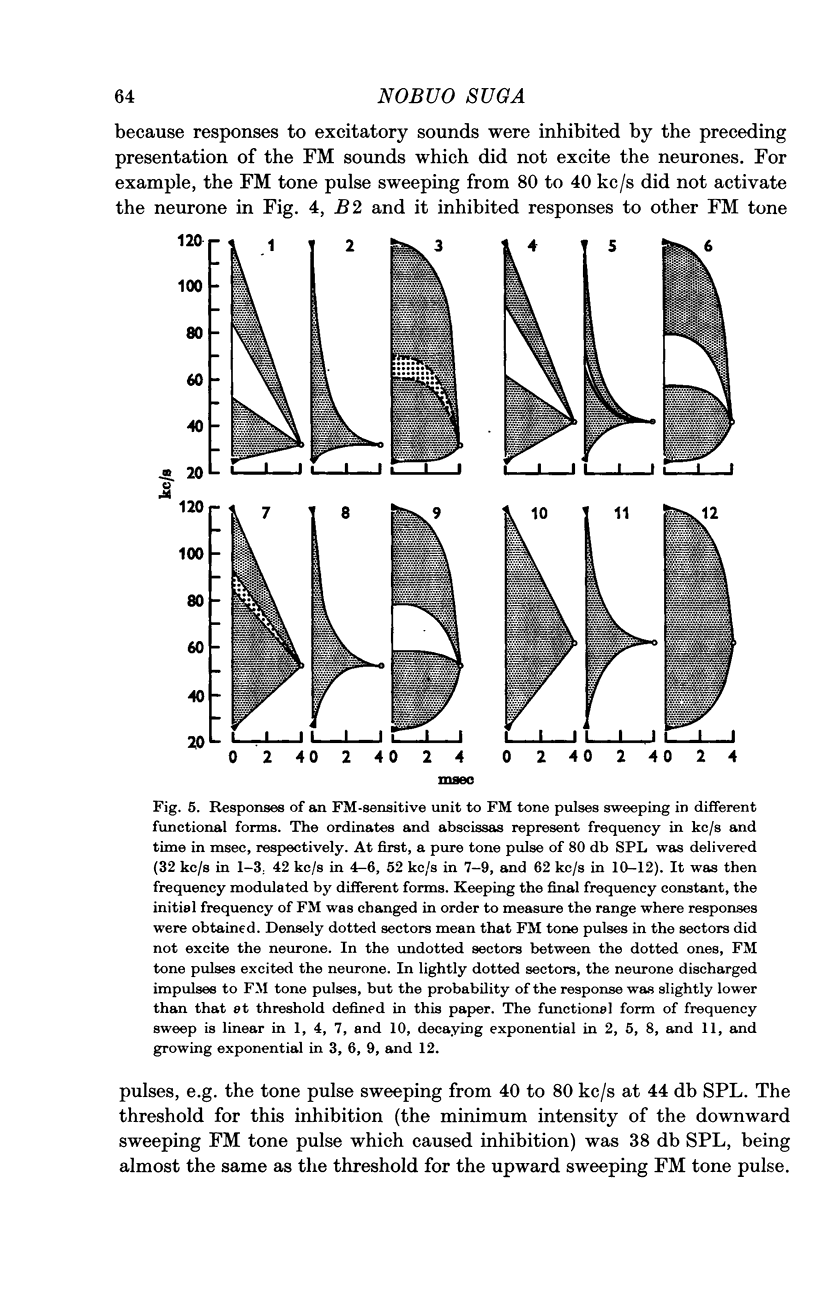
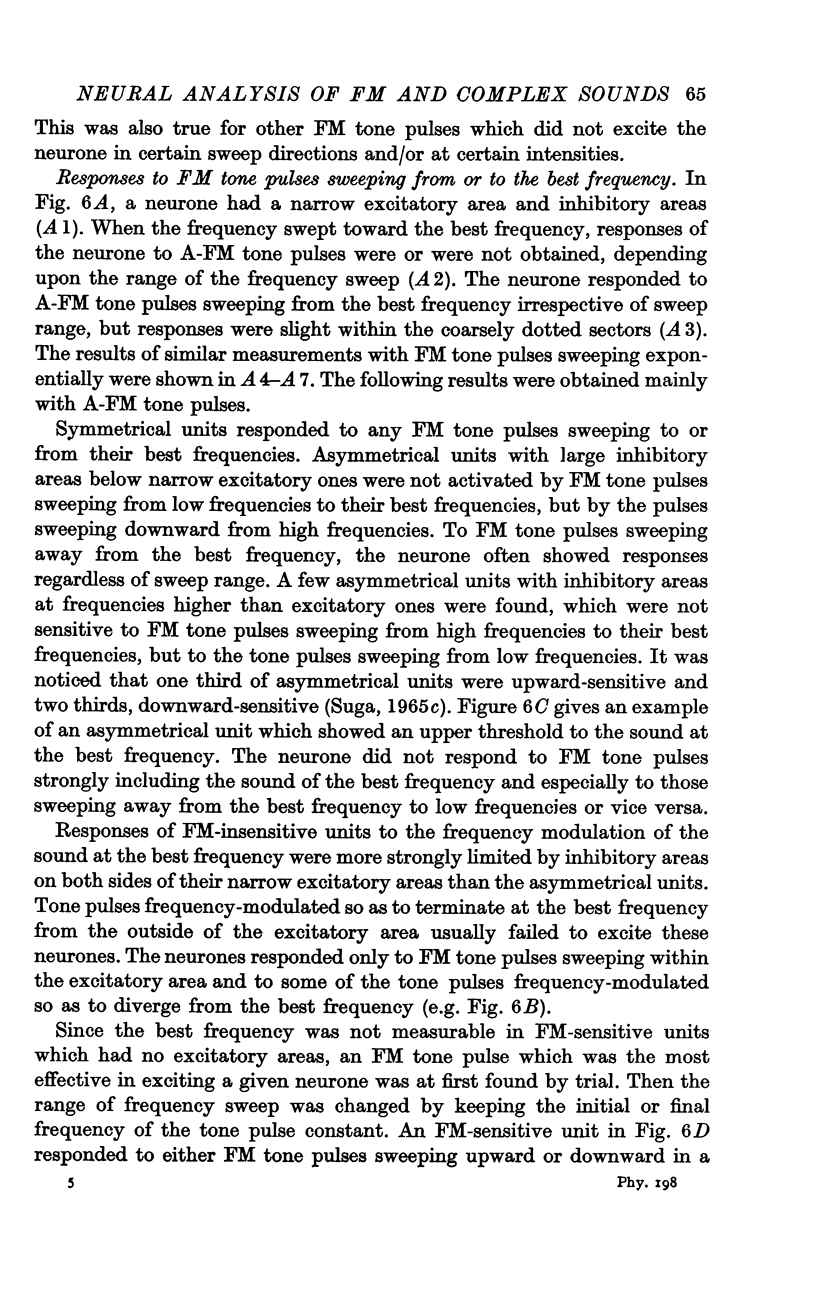
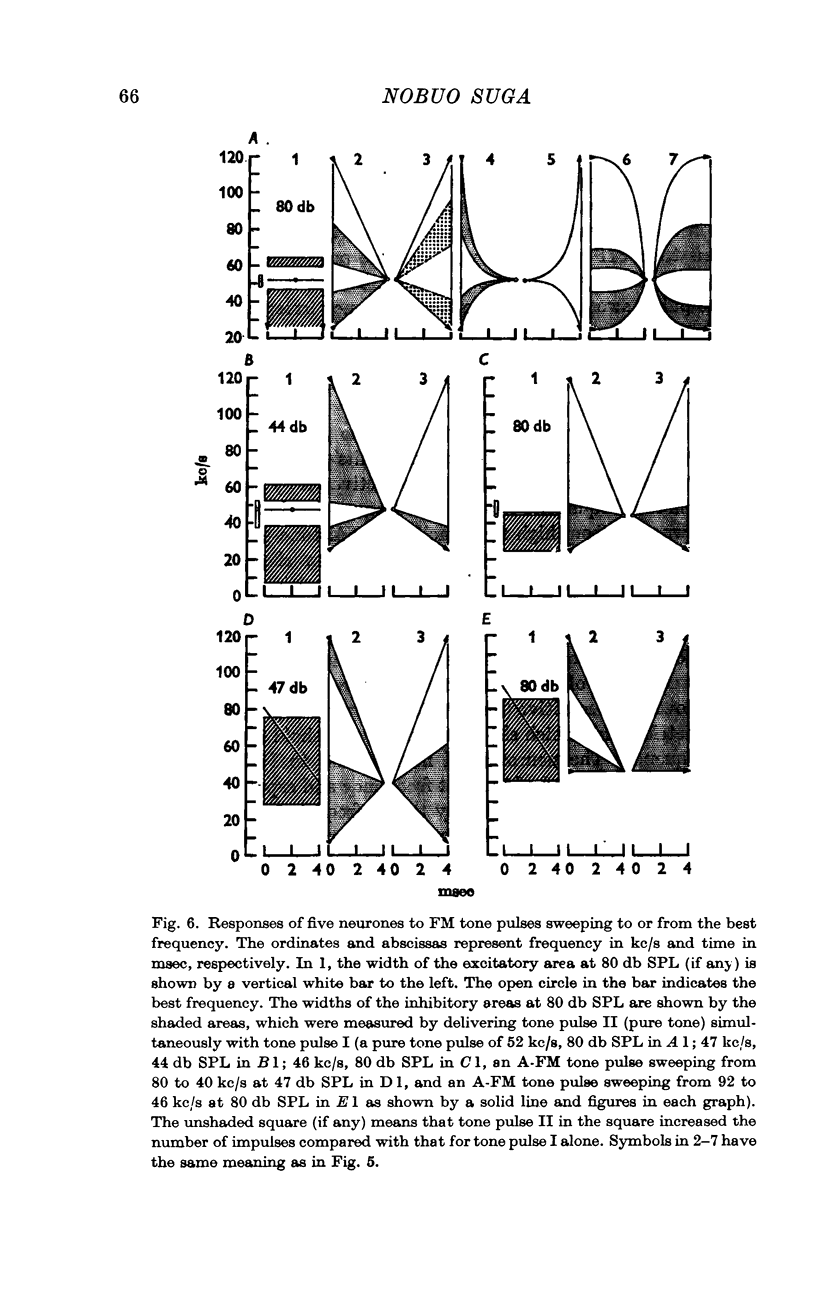
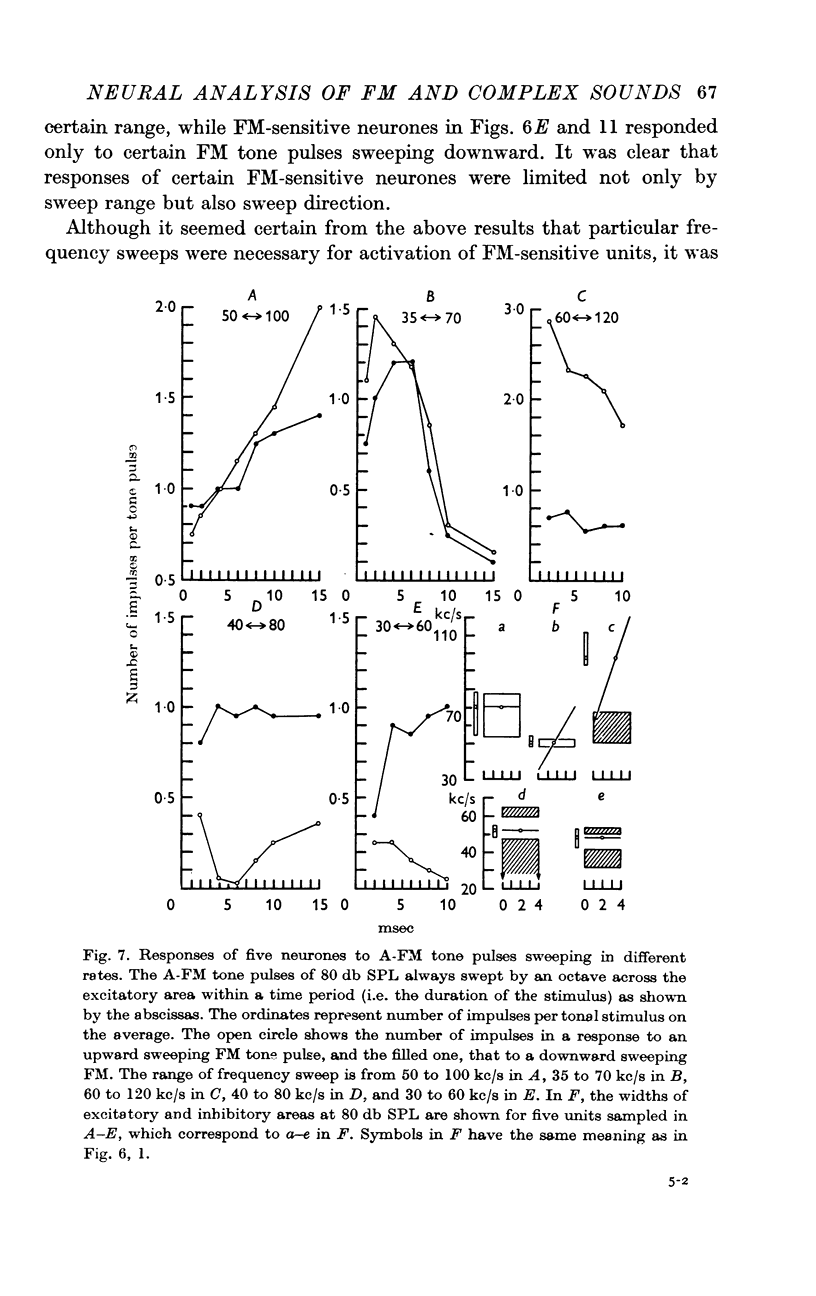
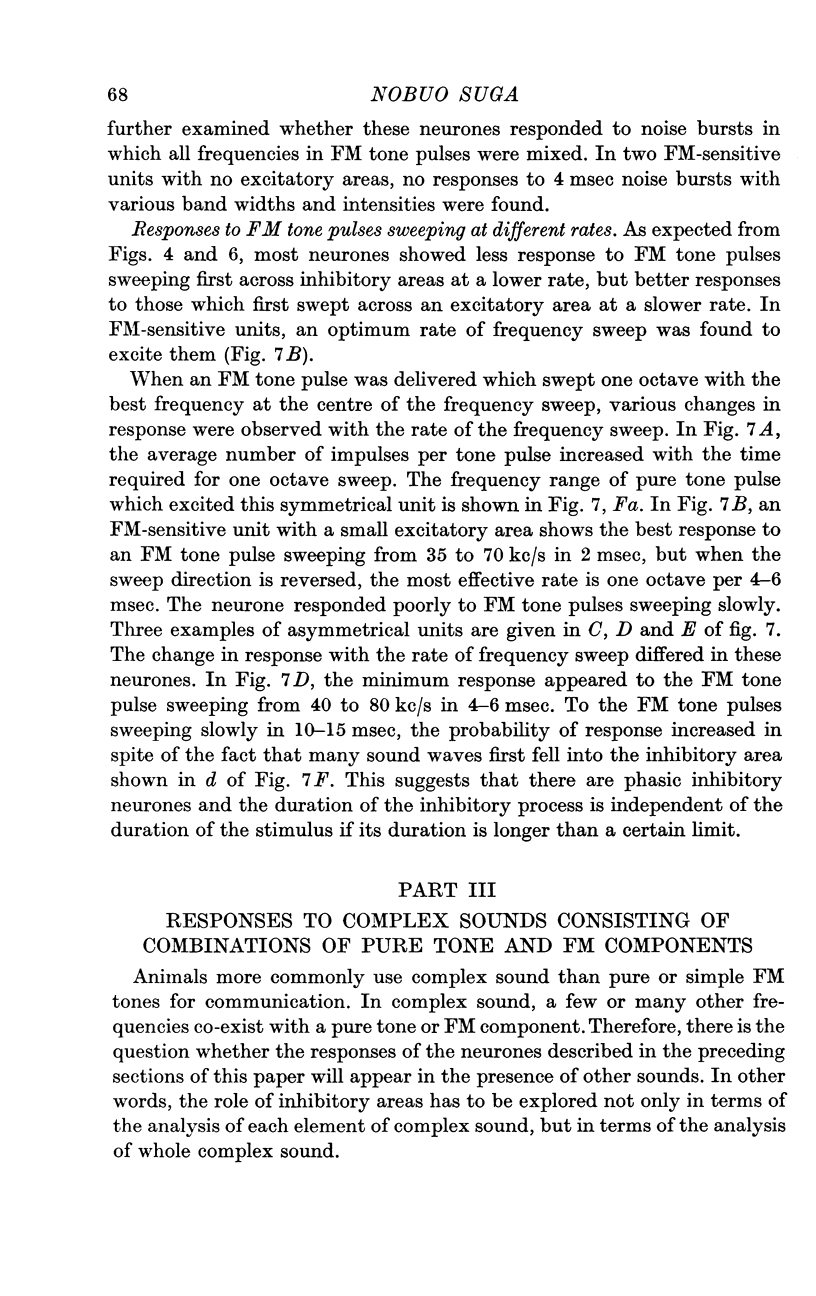
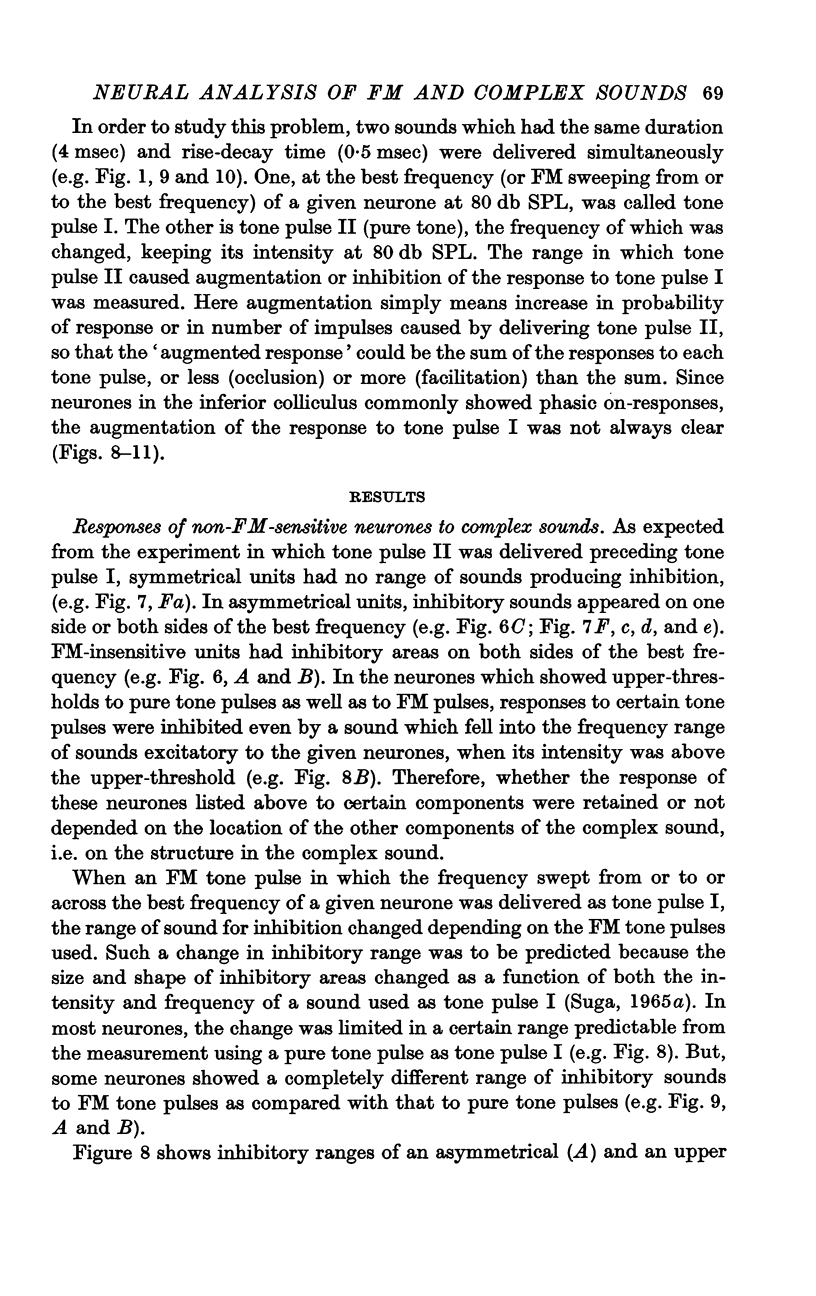
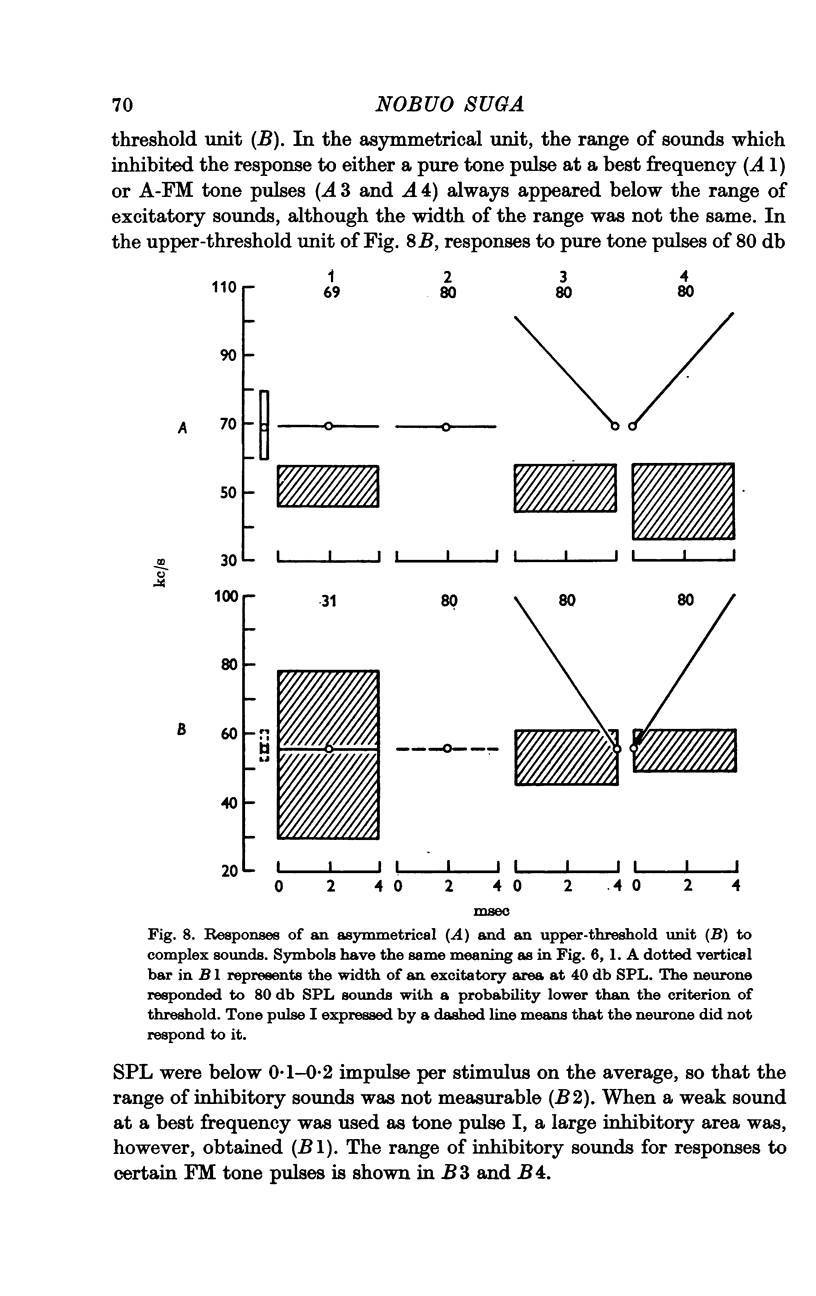
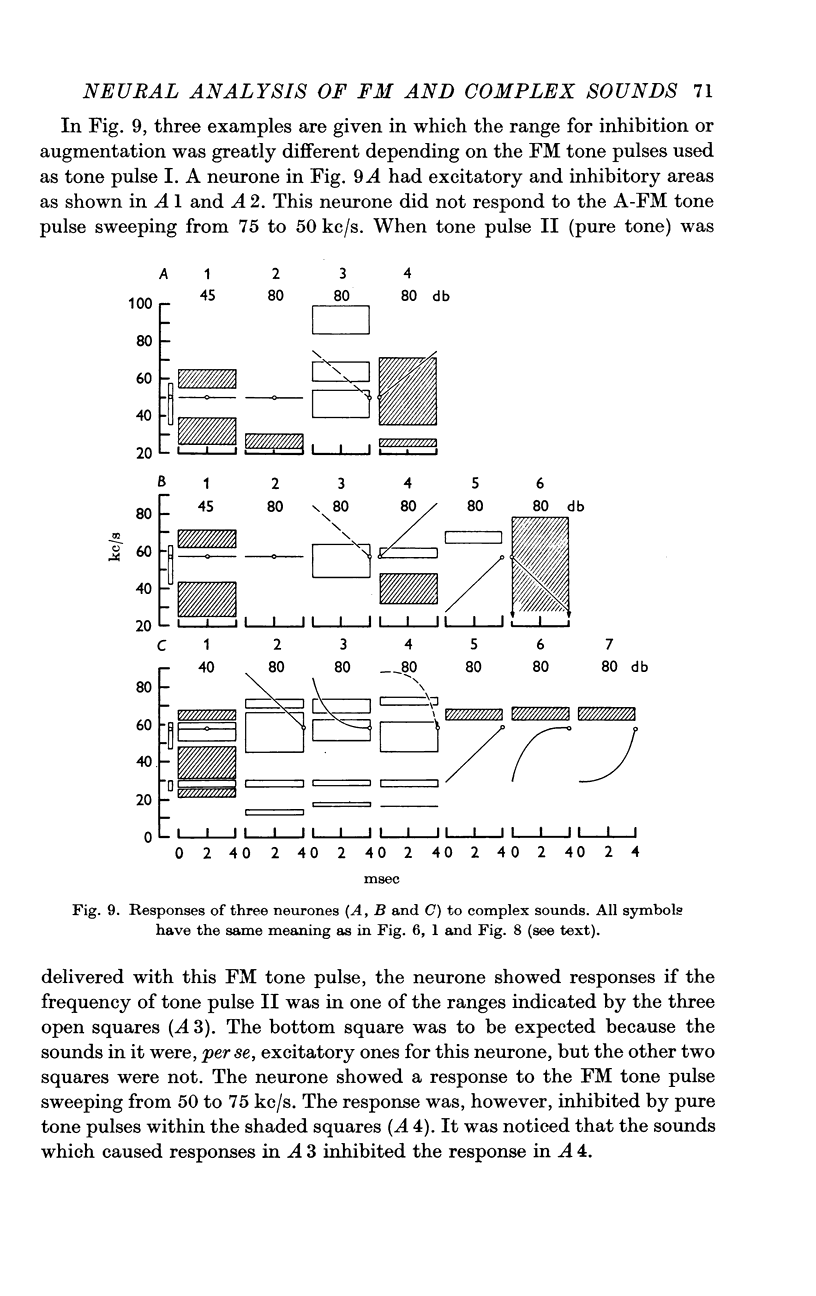
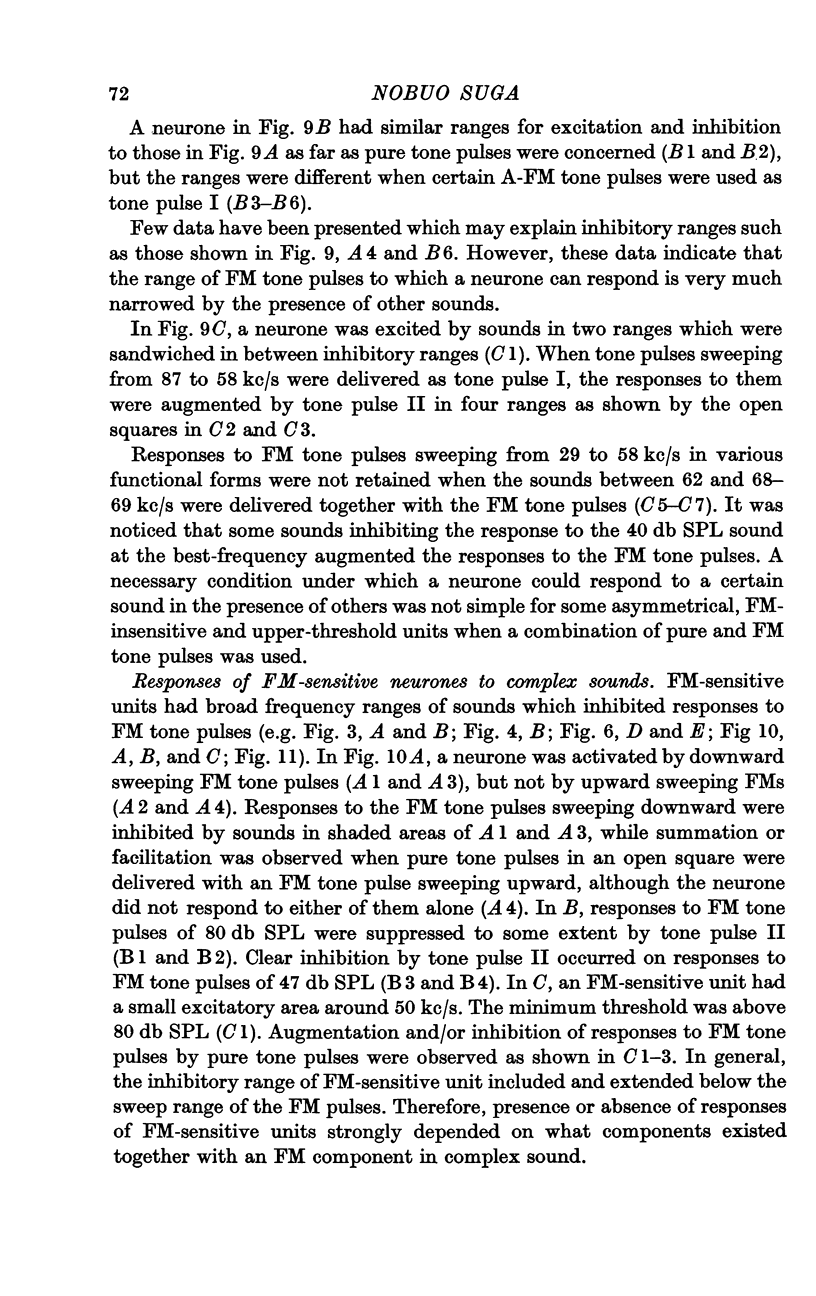
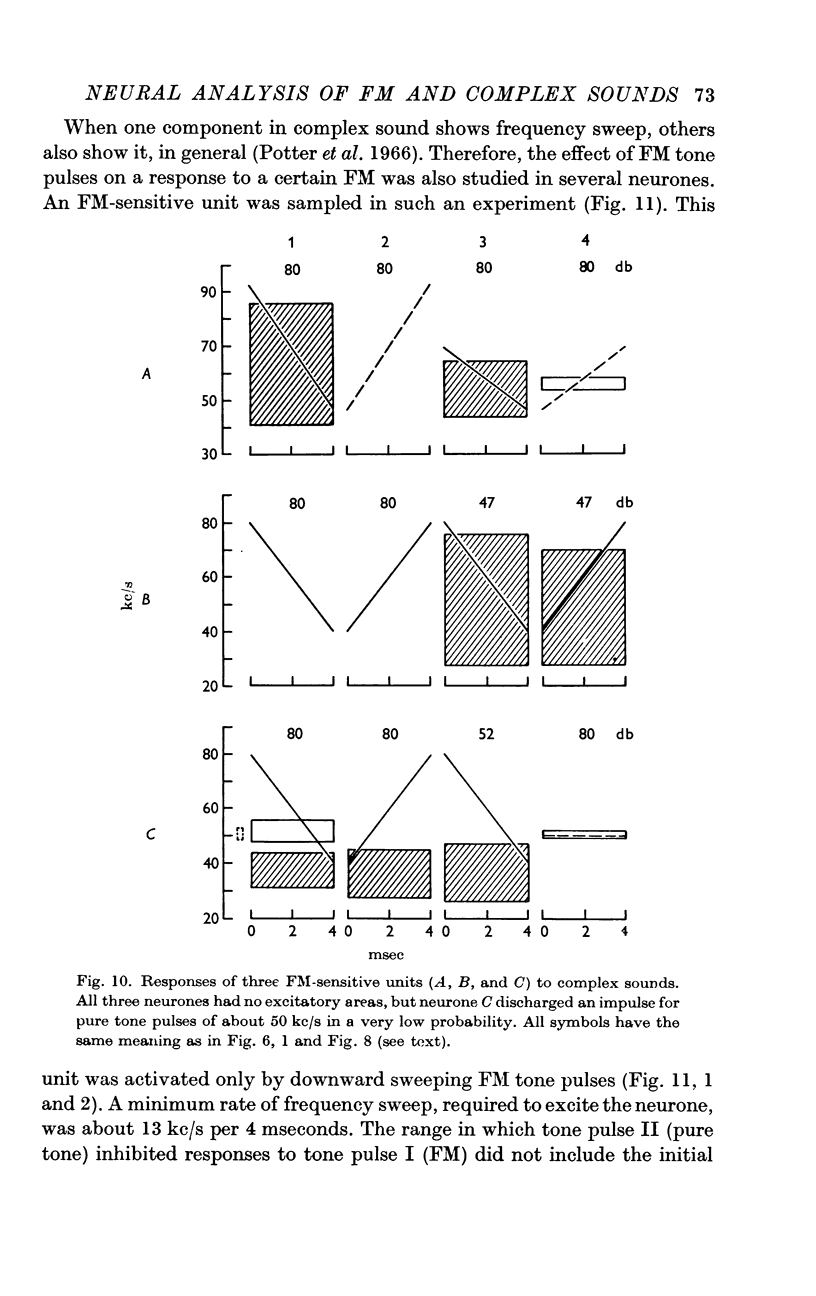
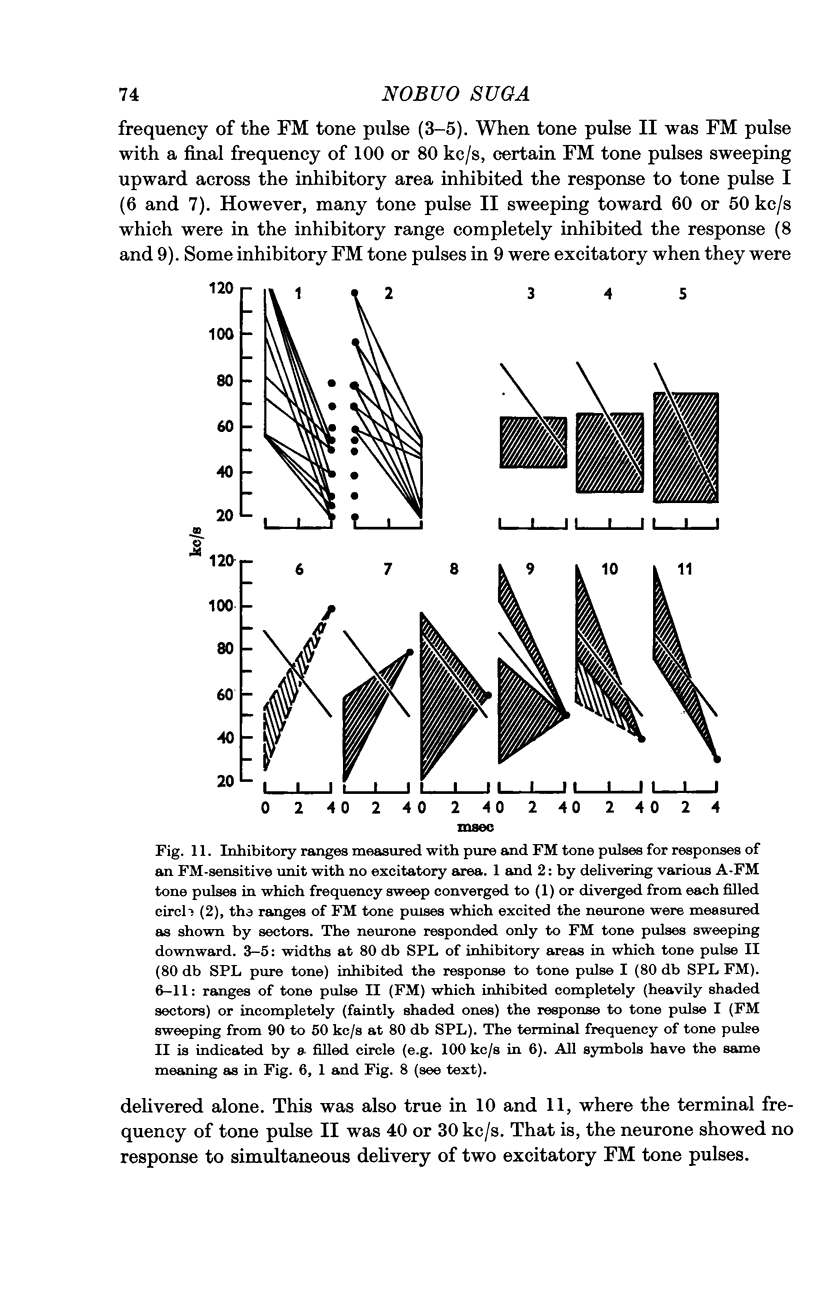
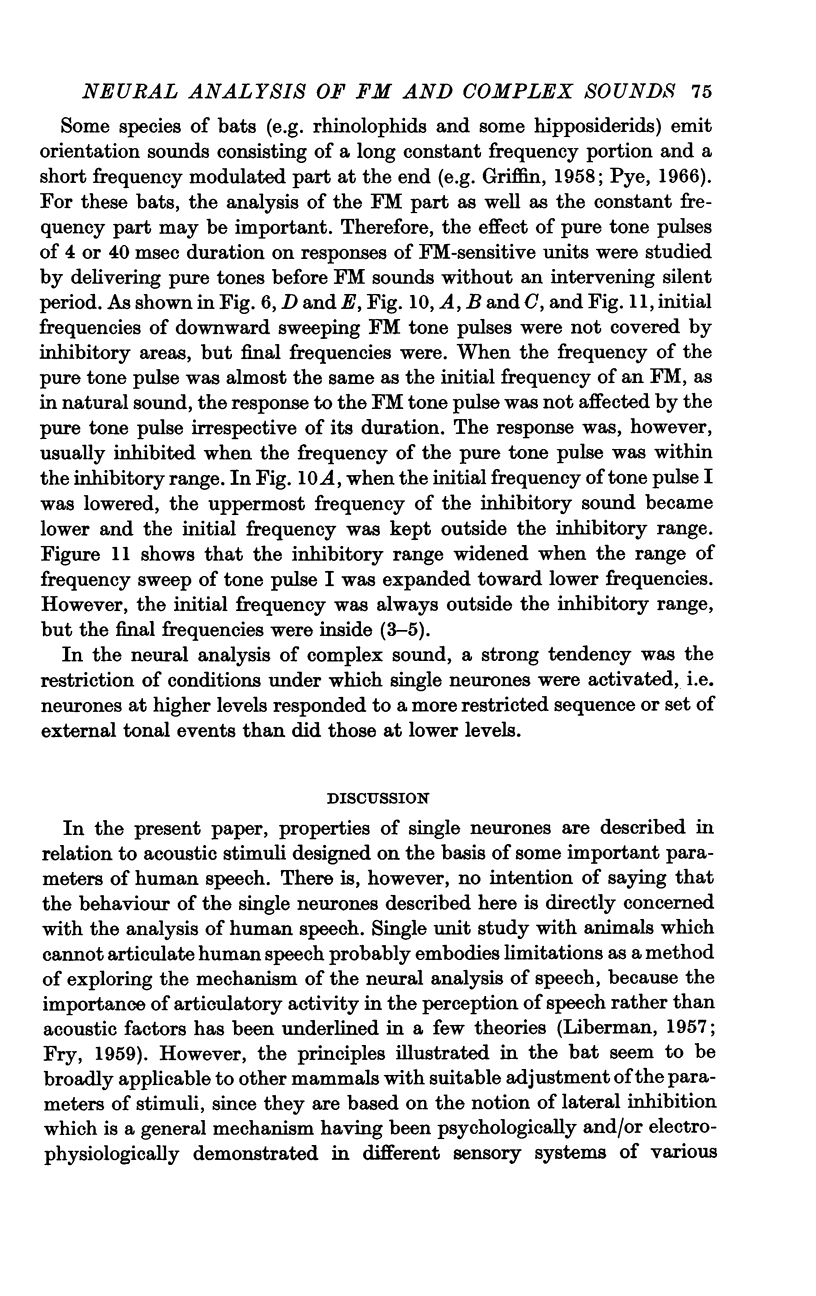
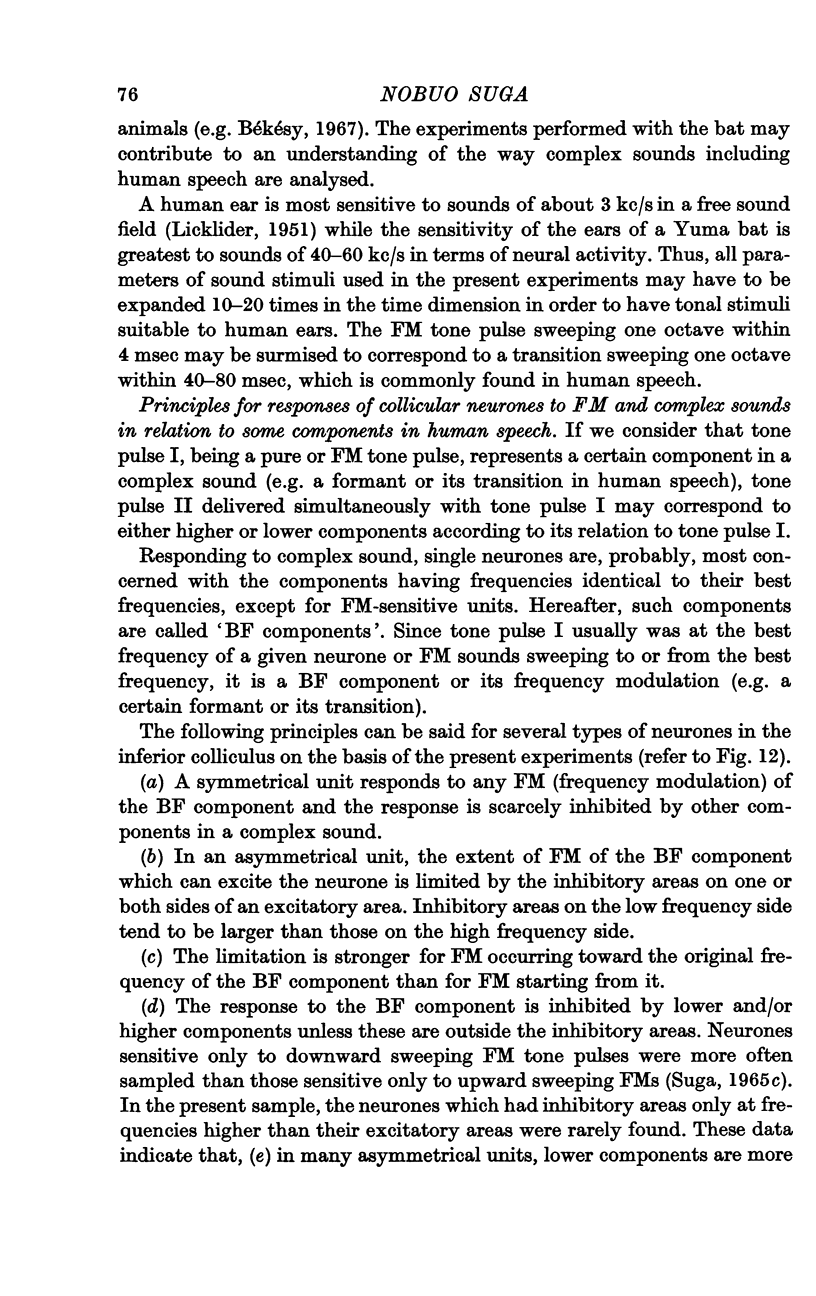
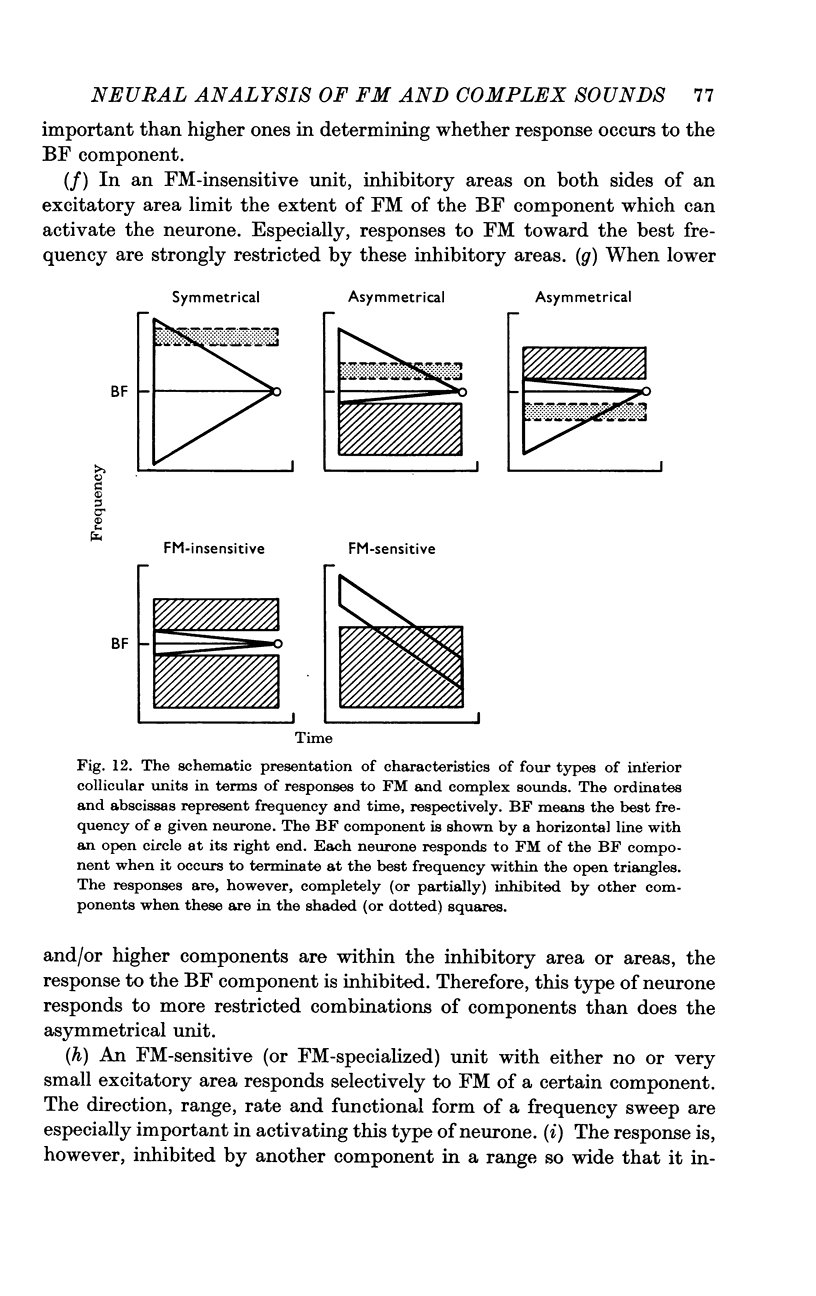
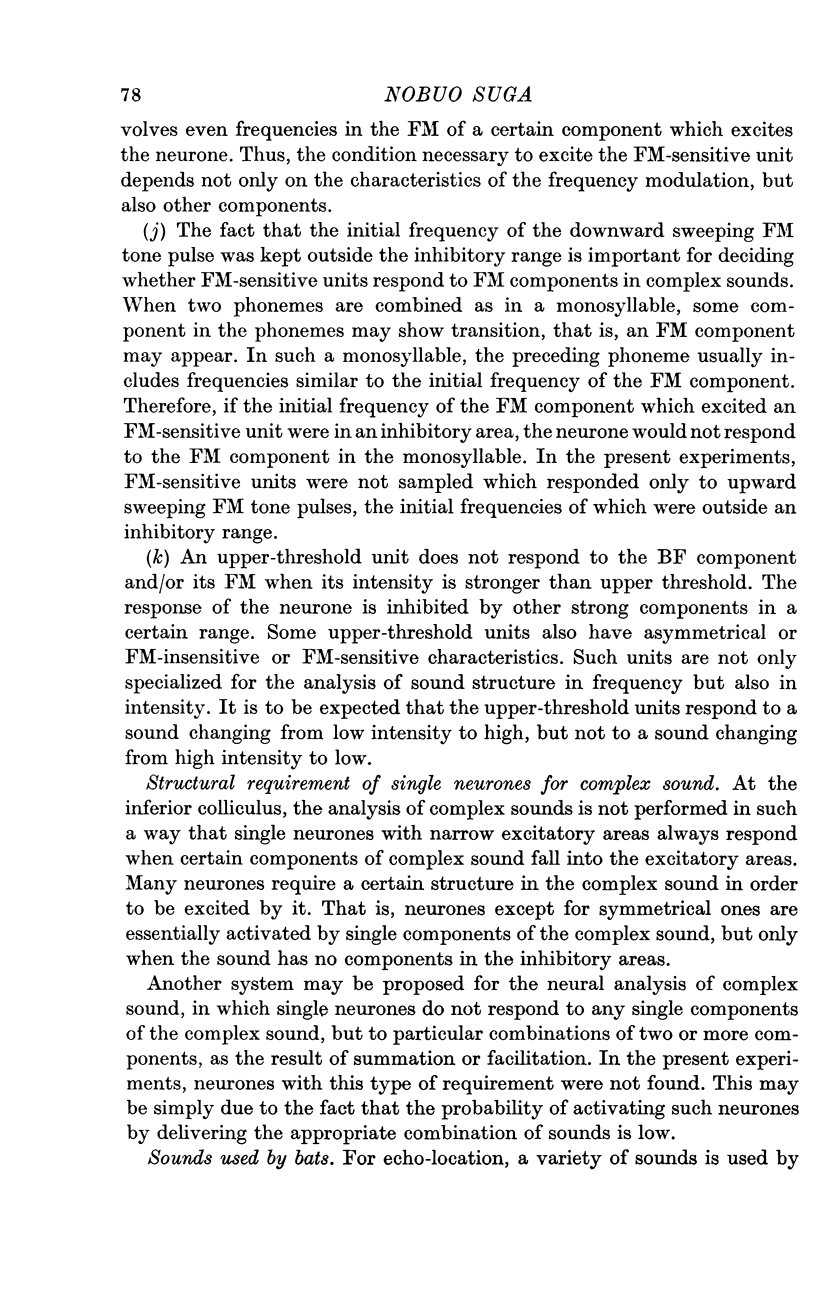
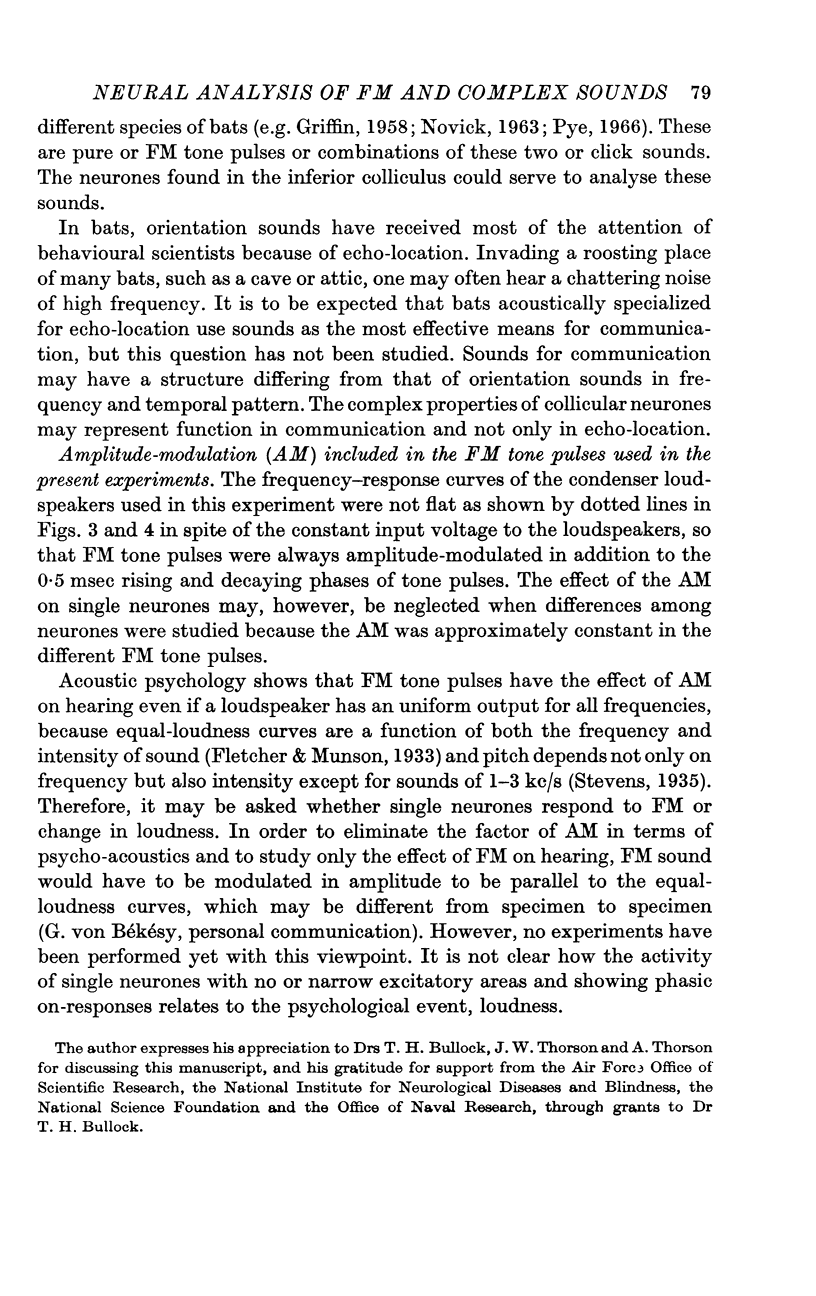
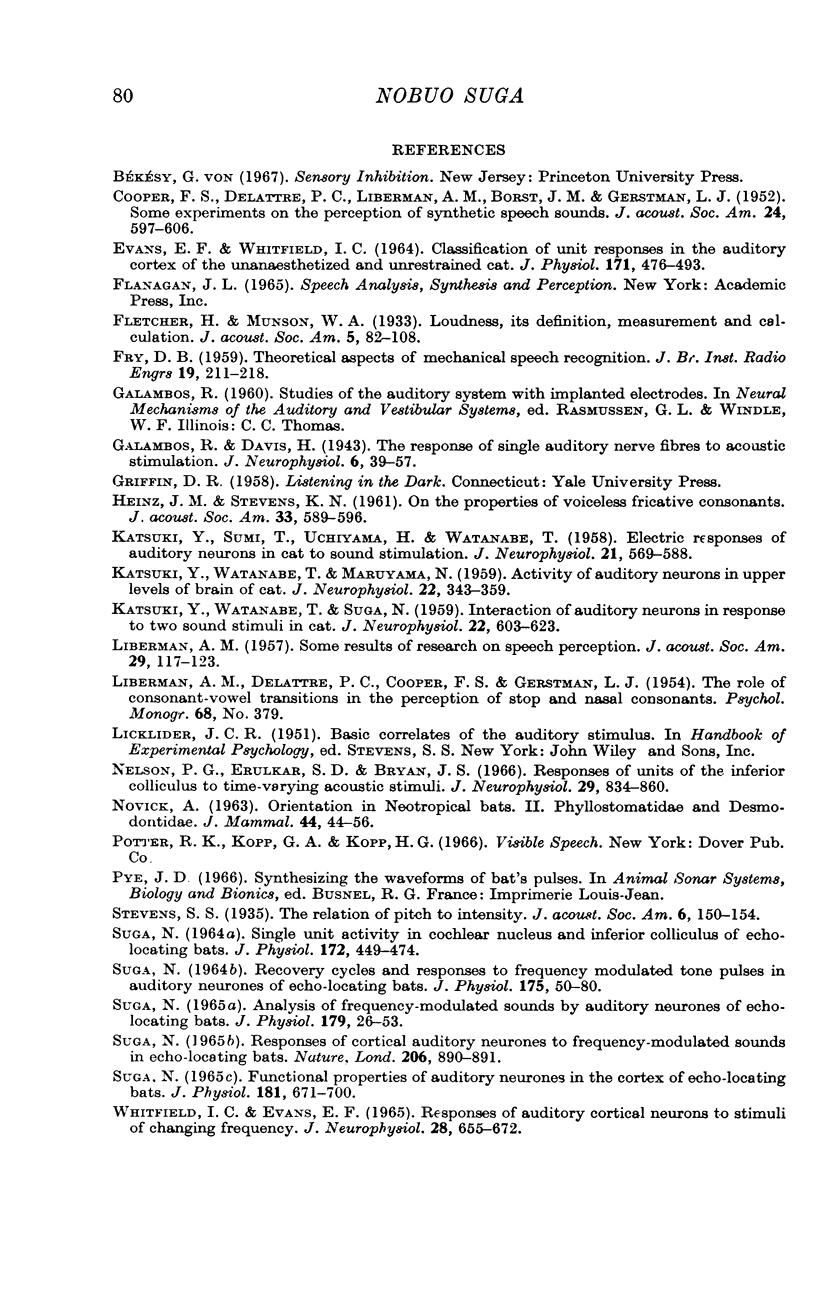
Selected References
These references are in PubMed. This may not be the complete list of references from this article.
- EVANS E. F., WHITFIELD I. C. CLASSIFICATION OF UNIT RESPONSES IN THE AUDITORY CORTEX OF THE UNANAESTHETIZED AND UNRESTRAINED CAT. J Physiol. 1964 Jun;171:476–493. doi: 10.1113/jphysiol.1964.sp007391. [DOI] [PMC free article] [PubMed] [Google Scholar]
- KATSUKI Y., SUMI T., UCHIYAMA H., WATANABE T. Electric responses of auditory neurons in cat to sound stimulation. J Neurophysiol. 1958 Nov;21(6):569–588. doi: 10.1152/jn.1958.21.6.569. [DOI] [PubMed] [Google Scholar]
- KATSUKI Y., WATANABE T., MARUYAMA N. Activity of auditory neurons in upper levels of brain of cat. J Neurophysiol. 1959 Jul;22(4):343–359. doi: 10.1152/jn.1959.22.4.343. [DOI] [PubMed] [Google Scholar]
- KATSUKI Y., WATANABE T., SUGA N. Interaction of auditory neurons in response to two sound stimuli in cat. J Neurophysiol. 1959 Nov;22:603–623. doi: 10.1152/jn.1959.22.6.603. [DOI] [PubMed] [Google Scholar]
- Nelson P. G., Erulkar S. D., Bryan J. S. Responses of units of the inferior colliculus to time-varying acoustic stimuli. J Neurophysiol. 1966 Sep;29(5):834–860. doi: 10.1152/jn.1966.29.5.834. [DOI] [PubMed] [Google Scholar]
- SUGA N. RECOVERY CYCLES AND RESPONSES TO FREQUENCY MODULATED TONE PULSES IN AUDITORY NEURONES OF ECHO-LOCATING BATS. J Physiol. 1964 Dec;175:50–80. doi: 10.1113/jphysiol.1964.sp007503. [DOI] [PMC free article] [PubMed] [Google Scholar]
- SUGA N. SINGLE UNIT ACTIVITY IN COCHLEAR NUCLEUS AND INFERIOR COLLICULUS OF ECHO-LOCATING BATS. J Physiol. 1964 Aug;172:449–474. doi: 10.1113/jphysiol.1964.sp007432. [DOI] [PMC free article] [PubMed] [Google Scholar]
- Suga N. Analysis of frequency-modulated sounds by auditory neurones of echo-locating bats. J Physiol. 1965 Jul;179(1):26–53. doi: 10.1113/jphysiol.1965.sp007648. [DOI] [PMC free article] [PubMed] [Google Scholar]
- Suga N. Functional properties of auditory neurones in the cortex of echo-locating bats. J Physiol. 1965 Dec;181(4):671–700. doi: 10.1113/jphysiol.1965.sp007791. [DOI] [PMC free article] [PubMed] [Google Scholar]
- Suga N. Responses of cortical auditory neurones to frequency modulated sounds in echo-locating bats. Nature. 1965 May 29;206(987):890–891. doi: 10.1038/206890a0. [DOI] [PubMed] [Google Scholar]
- WHITFIELD I. C., EVANS E. F. RESPONSES OF AUDITORY CORTICAL NEURONS TO STIMULI OF CHANGING FREQUENCY. J Neurophysiol. 1965 Jul;28:655–672. doi: 10.1152/jn.1965.28.4.655. [DOI] [PubMed] [Google Scholar]


